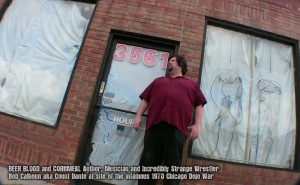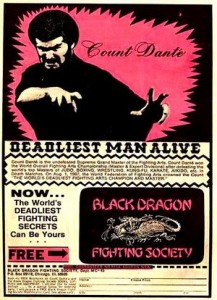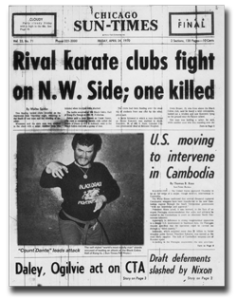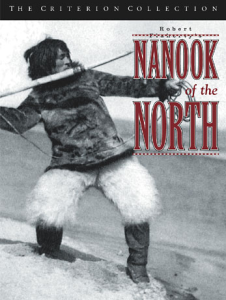In 1923, after the success of his film Nanook of the North, director Robert Flaherty was hired by Paramount Pictures to go to Samoa to capture the traditional life of Pacific islanders on film. His film, Moana (1926) is considered the first docufiction in the history of cinema.
The word “documentary” was first applied to this film in a review of this movie written by “The Moviegoer”, a pen name for social critic John Grierson, considered by many the father of British and Canadian documentary film.
Grierson further argued in his 1930s essay, First Principles of Documentary that Robert Flaherty’s film had “documentary value”.
Grierson’s principles of documentary posited that cinema’s potential for observing life could possibly be a new art form; that, “the ‘original’ actor and ‘original’ scene are better guides than their fiction counterparts to interpreting the modern world; and that materials ‘thus taken from the raw’ can be more real than the acted article.” Grierson’s consider documentary the “creative treatment of actuality”
80 years later, popular culture has given us generations that, seemingly and often, cannot distinguish between the “raw” and the “acted.” There is a serious conundrum created here. In working on this film the past few years I have come to realize how individuals apply their own unique, “creative treatment of reality.” So, my daunting task is to do what? Just roll the camera?
This is a great source of humor for me as I am continually questioning the meaning of this film, The Search for Count Dante. Hell it must be serious if I had to go all the way back to Nanook and Flaherty. I loved this film when I was 8. I watched it on WTTW in Chicago, more than once. I never saw Moana. But I identify with Grierson and Flaherty. At this early stage of cinema there wa a conscious attempt to define this new art form and give it some significant direction and meaning beyond the staged dramas of emerging Hollywood cinema. The question raised and critiques presented still carry considerable weight today.
I am focused on a central character of chimeral qualities, there is much fantasy and delusion here. The problem I face is that so much of the fantasy and delusion regarding his life remains intact. My task is to get to the story of the real man and examine the impact of that man, his life through other who knew and were influenced and effected by his existance.
This really should not be this heavy. Then I remind myself, every documentary is a journey of discovery. Those discoveries influence the outcome. I am presenting my discoveries to my audience to allow them to weigh my findings and make up their own minds. All i can do is present my observations. In saying that, I understand whatever point of view I do have will manifest itself in some unconscious way. 34 years after the death of Count Dante there are still secrets being kept, there are still those who remember him and knew him, and there are those who continue to be influenced and effected by his persona.

Author, rock ‘n roll musician, Incredibly Strange Wrestler, Bob Calhoun, and Count Dante parodist came to Chicago a while back to promote his book, Blood, Beer and Cornmeal. While he was here we went to all the relevant Chicago Count Dante Sites.
This picture is of Bob at the former site of the Green Dragon Black Dragon Hall of Kung Fu at 3561 W Fullerton. This is the site of the April 23, 1970 “dojo war” where the real Count Dante went to engage in a fight that resulted in the death of his best friend Jim Konsevic.
Bob is just one of the people who was fascinated as a child by the compelling advertisement  released by his childhood curiosity and namesake Count Juan Raphael Dante. This advertisement, touting Keehan/Dante as “the deadliest man alive” circulated in comic books and men’s magazines for over 10 years, had a significant effect on the martial arts community and, surprisingly, on global popular culture. It is the advertisement alone, not the book, but the ad itself that fired the imaginations of 7 to 18 years olds.
released by his childhood curiosity and namesake Count Juan Raphael Dante. This advertisement, touting Keehan/Dante as “the deadliest man alive” circulated in comic books and men’s magazines for over 10 years, had a significant effect on the martial arts community and, surprisingly, on global popular culture. It is the advertisement alone, not the book, but the ad itself that fired the imaginations of 7 to 18 years olds.
I have met ministers who bought Dante’s book, executives at Irish potatoe chip companies, science-fiction writers like Robert Rankin who see Dante as essential Americana. Explaining the world into which this ad exploded is to examine myself and my place in that world at that time.
The core idea of the film I am making is about empowerment, how we seek it through others, how a man like Dante/Keehan rises to the occassion, for better AND worse, to create an enduring legend complete with errant FBI files, hushed warnings about investigations into his life, the occasional veiled threat, and an invitation to Federal Court in Boston for for alledged copyright infringement.
He was born John Timothy Keehan on the South Side of Chicago in 1939. After an illustrious but controversial career as a martial arts instructor, businessman, and hairdresser he went on to alllegedly mastermind the 1974 Purolator Vault Robbery.
 In the years that I have researched, developed and shot this film I have come to understand, just a little, how the “dojo war, the April 23, 1970 event that resulted in the death of Jim Konsevic came about. My intenton has always been to NOT make this story central to the documentary. It was old, and unresolvable as far as I could see.
In the years that I have researched, developed and shot this film I have come to understand, just a little, how the “dojo war, the April 23, 1970 event that resulted in the death of Jim Konsevic came about. My intenton has always been to NOT make this story central to the documentary. It was old, and unresolvable as far as I could see.
I always felt that the story was really about the martial arts world itself. It is not so much about how, why, minute details of rivalries or who said what to whom. It is really about bad judgement. Time to just cut to the chase. It is about the thing I lecture my 18 year old about and even myself. taking the time to stop and think, to not panic. Bad judgement and panic can get people killed.
No matter what I do it keeps pushing itself to the front. Then I get another email warning and questions about “my sources,” accusations against sources and suggestions that I “find another project.”
I am making a documentary, some of these things I find and experience will go into the final product, some will be deemed not so important and possibly end up in the book and given some detailed context. We will see.
Oh yeah, the book! I am working with Mr Calhoun to do backstory on the making of the film. Another underground cult kind of thing that he is so good at.
Looks like I have been rambling a bit. I promise to do better in the future.


I took a Visual Anthropology course two years ago at UMass, and we studied Nanook of the North. What wasn’t known for many years was that Flaherty was having the eskimos "act" themselves. It wasn’t journalism at all. "Nanook" was a character being played by an Eskimo "actor" (with a different name of course). All the things that happened in the film were based on Flaherty and his helping
I’m posting this on 04/23/09, today is the anniversary of the ‘Dojo War’
testing discus commentary.